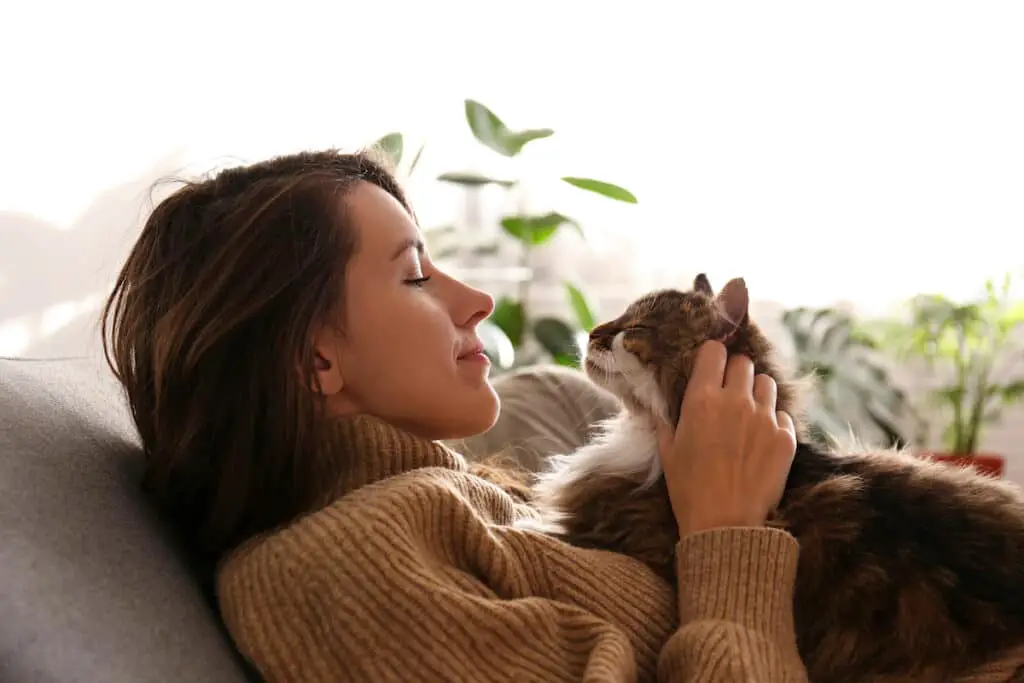The exact reasons why cats purr, knead, or meow aren’t often clear to us. Here are some of the most frequent causes of cat purring and what your cat may be trying to tell you.
1. Cats Purr to Get You To Like Them
Momma cats use purring to get their kittens closer in order to keep them safe and get them their first meal because kittens are born blind and deaf. Similarly, your cat’s purring draws you closer by grabbing your attention. For instance, your cat might purr when he wants some attention. Even though you didn’t teach your cat to purr, your actions could encourage it to do so more frequently. Your cat will probably repeat his purring if you pay attention to him when he does it. The behavior is maintained by this reinforcement.
2. Cats Purr When They’re Happy.
When connecting with loved ones, things, or other animals, adult cats purr. or when they are engaging in a pleasurable activity like rolling or caressing. For instance, when you brush your cat, he might purr. She might also purr when snuggled up between your feet on the bed at night.
3. Purring May Say Your Cat Needs You
A purring cat may “beg” for assistance. Your cat can be famished or clamor for your attention. According to studies, knowledgeable cat owners can distinguish between their cat’s purrs. Purrs that resemble meows are intended to beg for food and sound different from happy purrs. Can you distinguish between them?
4. Purring May Be a Sign of Distress
Happiness does not always equate to purring. When cats are scared, such as during a veterinary appointment, they occasionally purr. This may be a remnant from the time when kittens purred to ask their mothers for assistance or care. Similarly, your cat may purr to indicate that she wants assistance and is in trouble.
5. Purring Can Promote Healing.
Cats can reduce our blood pressure and stress levels, but purring also promotes self-healing. A cat may purr to ward off illness. Cats purr between 25 and 150 Hz, with their strongest purring occurring between 25 and 50 Hz. It’s interesting to note that these frequencies match those that are utilized to treat pain and fractures. Additionally, these frequencies might promote wound healing, flexibility, and muscle growth. Your cat may be purring as a self-healing mechanism.
The best course of action is to pay attention when your cat purrs. Take note of the situation, her demeanor, the tone of her purr, and her actions in response to your response. Don’t be afraid to experiment when she purrs. Does she settle down and fall asleep if you pet her? If so, she requested a pet from you. She moves away from you, does she? In that case, she might crave food or wish to play. Knowing your cat by observing and responding to her signs strengthens your relationship and increases your feline love.
How Cats Purr
By using the muscles in their larynx and diaphragm to control the airflow as they breathe, cats may produce a purring sound. Fun fact: Cats of other species besides domestic cats also purr. Additionally, the lynx, cheetah, and bobcat purr. Days after birth, babies start purring. When a kitten is sucking, it kneads and purrs, and mommy cat may also purr at that time. Mom will be able to hear and feel the purr, so this may be one method kittens use to let her know they need to keep nursing. The kitten appears to be speaking: “Hey, I’m still around. “Stay still!” or “I adore this!”














